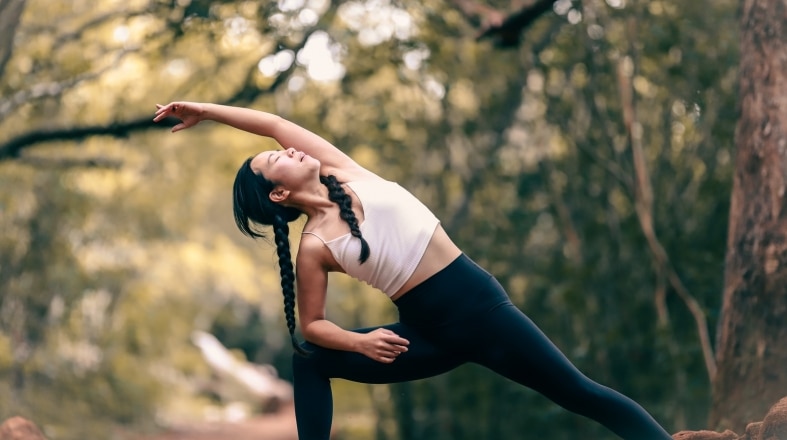Dealing with stress is a big issue in today’s world, with the extended working hours and the lack of time and consciousness about our psychological well-being. Even though it is so overlooked, the stress in daily life is a significant factor influencing many aspects of our lives. There are some efficient ways of dealing with stress, such as meditation, stretching, and mindfulness. And in fact, they are pretty easy to practice with the increased numbers of applications designed to help people learn them.
Those practices can be a good way of eliminating stress and feeling better as a whole, and they can work wonders in terms of stress management. It can be quite challenging even to notice the symptoms of burnout, and excess stress, so it might be the best idea to try stress management techniques in a case where you do not feel “good” about yourself.
And we must highlight that there is nothing wrong with being stressed out and overwhelmed; most people are going through a lot, a lot more than they can handle. However, you have to put the effort to work on stress. It will take some effort, but the results will be worth it.
Without further ado, let’s begin to talk about stretching, meditation, mindfulness, and how they are related to stress management.
Top Relaxation Techniques for Stress Relief
It does not make sense to continue what you do and expect it to go away when it comes to stress relief. At the end of the day, specific stressors in your daily life are making you stressed, and you cannot expect different results by doing the same stuff over and over again.
As we mentioned earlier, there are ways and techniques of managing stress, and you need to practice them for stress relief. The following are the top relaxation techniques for stress relief.
1. Meditation

Meditation is one of the most effective practices to reduce stress, with tons of other benefits. Meditation is a practice that has been used for centuries to achieve a state where the person is mentally good and emotionally stable by working on their awareness and attention. Indeed, meditation is known for being influential on psychological well-being, productivity, stress, and handling emotions, proven by various studies.
But, how does meditation precisely help with stress relief and stress management? Here is how:
- Stress is a natural response of the human body to pressure. The nature of meditation aims to clear your mind from pressure, targeting the main source of stress.
- Beyond stress relief, meditation is a powerful way of building immunity for stress.
- It creates a mental state where you are calmer, more open to positivity, leaving a lot more space for productivity.
- On the contrary to stress, which triggers fight or flight response, meditation is a trigger for the relaxation response. In this case, if stress is the poison, meditation is the antidote.
- There are different types of meditation, which offers an opportunity to choose the best option that works for different kinds of people.
Check out the 6 amazing meditation apps to start your journey
2. Mindfulness

Mindfulness is a meditation technique, but since it is so efficient and influential, it is better to talk about it separately. We mentioned how meditation is the antidote to stress, and mindfulness is the way of replicating the natural way of dealing with stress.
In essence, mindfulness is practicing “being in the moment.” When we are exposed to stress, we tend to have a million thoughts in our brain, thinking about what happened in the past, what will happen in the future, and how we are going to handle them all.
Mindfulness is an escape, a healthy escape from all those thoughts. In mindfulness practice, you will learn to be in the moment. Not in the past, regretting, or not in the future, worrying. This is a very important and valuable skill that can help us to manage stress and be present in the moment. Think about it, when was the last time that you were fully present in “now,” free from the weights of the past and future? As you may already notice, this is strongly related to productivity as well.
The following are the benefits of practicing mindfulness:
- Improving brain activity
- Improving emotion regulation and attention.
- Decreased possibility of negative emotions and thoughts.
- Increased productivity
- Reduced stress
- Opening space in your mind for positive thoughts and emotions instead of negative ones.
3. Stretching

Sometimes the intensity of stress can be pretty prominent in our body, just like how our body tells us that something is wrong by giving illness symptoms. Indeed, some parts of our body can get tense by carrying the weight of stress. In this case, stretching can relieve the physical symptoms of stress by targeting those areas and letting go of the weight. The following are the benefits of stretching on stress and other health benefits:
- Relieving muscle tension, which results in stress relief.
- Increasing relaxation in your body.
- Improving mental health by practicing mental training.
- Preventing the influence of future stressors.
- Improving circulation, resulting in a clearer mind and thoughts.
- Improving posture.
4. Practice Gratitude

Being so focused on the bad stuff in our lives can be a major stressor, and it might not always be possible to find positivity in our daily lives. One influential way of finding peace and positivity with what we have is by practicing gratitude.
You can start by writing down the five positive things that happened to you during the day. They do not have to be major accomplishments; you can write stuff like petting a dog, eating a good meal, or taking a walk. As time passes, you can improve your gratitude practice by writing down the things you want in your life, as if it already happened.
This sequence is closely related to the “self-fulfilling prophecy” phenomena in psychology. Once you believe in something, you will be more open to the tiniest proofs of it. Eventually, a convenient environment will occur for it, leading for it actually to happen. This practice can help you a lot while dealing with stress, offering a more positive mind.
What is Progressive Muscle Relaxation for Dealing with Stress?
Another technique used for stress relief and dealing with stress is progressive muscle relaxation. In comparison to other techniques, progressive muscle relaxation is not commonly known. Many people may have heard of meditation and mindfulness, yet progressive muscle relaxation is not the first thing that comes to mind in those terms.
Like stretching, progressive muscle relaxation targets the physical symptoms of stress, resulting in relief and reduced symptoms. It consists of the practice of tightening and tensing muscles with a proper technique and certain steps. The idea behind progressive muscle relaxation is similar to cognitive behavioral therapy in psychology, which aims to change the behavior to observe a change in thoughts.
In progressive muscle relaxation, you target the physical symptoms of stress to heal its influence on your mind eventually. Just like other stress relief techniques, learning and mastering progressive muscle relaxation takes time, but it is worth it—really.
Moreover, progressive muscle relaxation is known for being very effective in improving sleep quality. Since sleep contributes to your stress level and overall well-being, helping with stress management more than usual. In fact, progressive muscle relaxation is so efficient in sleep quality that many insomnia patients are practicing it as a way of helping them fall asleep.
Additionally, as you practice progressive muscle relaxation, you will get the chance to know your body. It is crucial to understand the language of your body to understand when it tells you that something is going wrong. As you master the art of progressive muscle relaxation, you will also be able to identify any problems present in your body correctly.
Is handling stress possible while working from home?
What is an example of a progressive muscle relaxation session?
What type of yoga is best for stretching?
Originally posted on December 16, 2021 @ 7:02 pm




